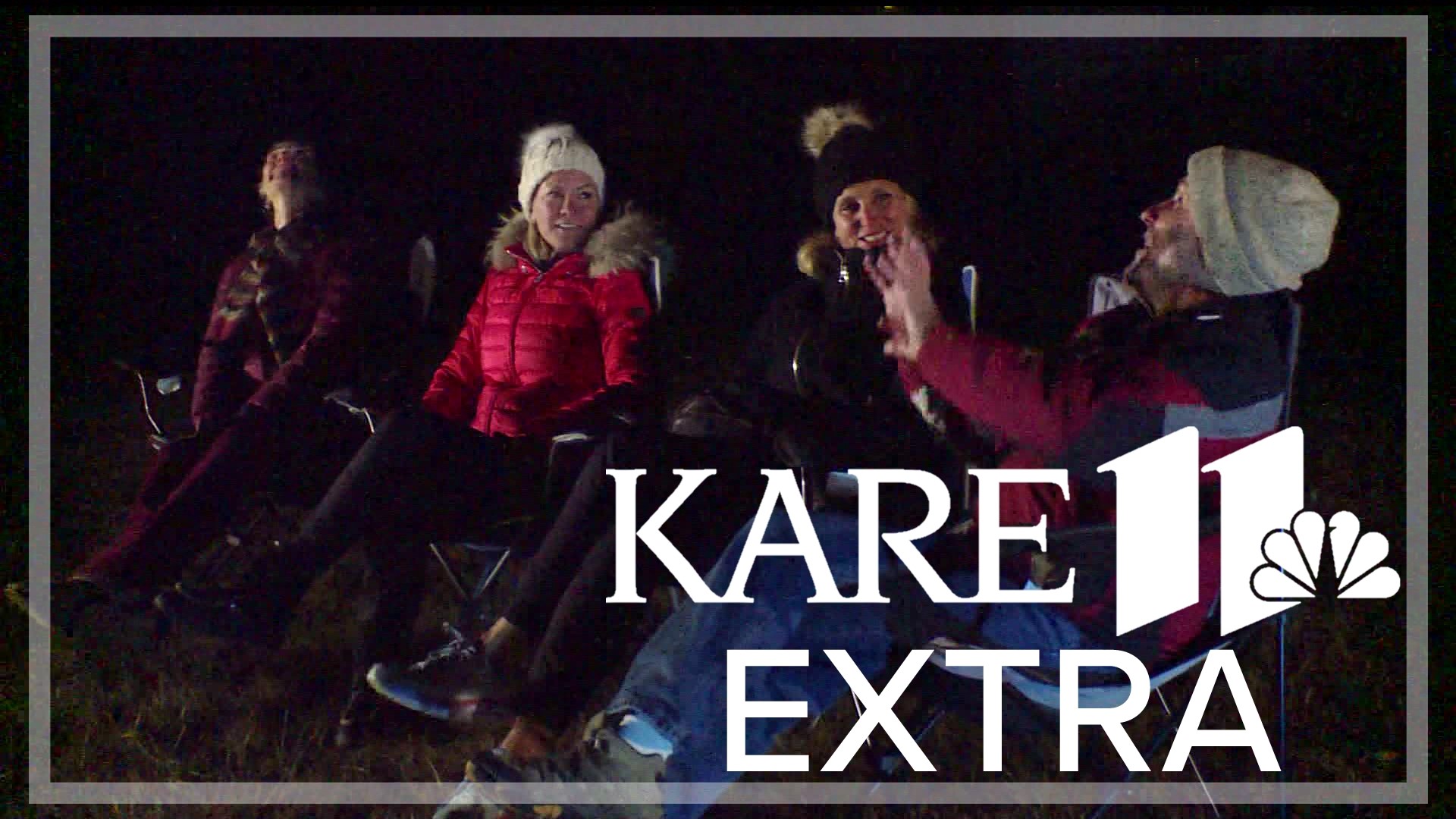LUTSEN, Minn. — Thousands of people drive to the North Shore every year to take in the beauty of the rivers and, of course, the great Lake Superior.
But another natural resource is also drawing tourists — only revealing itself when the sun goes down.
Todd Burlet who is an International Dark-Sky delegate, and avid night photographer, told us, "It's just like, the drum roll, please, because, you know, night's about to come. And then the next act is laying back and just watching the stars come out."
That's right: stargazing. You might not think stars are worthy of a road trip, but that might be because you've never really seen them.
Thaddeus LaCoursiere, an astronomer from the Bell Museum, told us what we're missing in the metro being surrounded by an abundance of artificial light.
"Yes, yes. There's no other way to put it. It is a major difference from when you get away from the city — when you get away from that light pollution," Thaddeus said. "The difference in stargazing in the city versus northern Minnesota is so stark that people don't quite believe it."
He went on to say, "We also get some confusion. Sometimes we point out things in the sky like the Milky Way, and most kids have never seen the Milky Way in the sky before. If they've grown up in the cities, they've never seen the Milky Way in the night sky."
Light pollution from city skylines and street lights obscures up to 90% of the stars, according to the International Dark Sky Association (IDA), which is a nonprofit that works to stop the spread of light pollution. Todd Burlet is a local IDA delegate.
We asked him about visitors' first impressions when they get into true dark skies and see the sight for the first time.
"Jaw-dropping, literally," he said. "You take somebody out and you show them the night sky and it's both a sense of awe and a sense of almost bewilderment of what they've been missing."
The video from the IDA that we showed in the piece illustrates the difference between a light-polluted sky and a dark sky. It's estimated that 80% of the world's population lives under light pollution, but northern Minnesota is one of the few bright spots when it comes to dark skies.
In 2020, the IDA designated Voyageurs National Park a "dark sky park" and the BWCA a "dark sky sanctuary" — one of only 16 in the world — for its "exceptional or distinguished quality of starry nights."
The Minnesota Tourism Department says those designations turbo-charged an already growing interest in astrotourism.
Cook County now hosts a "Dark Sky Festival" in Grand Marais every December with night sky photography workshops and guided stargazing walks. This year, they'll screen a new PBS North documentary filmed in Minnesota called, "Northern Nights, Starry Skies."
Resorts are taking note as well, with Lutsen Mountain's Eagle Ridge Lodge, for example, now offering a "dark sky" discount in December. And just down the road at the Klarhet, guests follow intentionally dimly lit paths to their own private geodomes, giving them a view of the night sky from the comfort of their own bed.
"That is our effort to make sure we're minimizing the light pollution that we have," said Nicole Leand, co-owner of the Klarhet Ecoresort. "So the domes all have sensors. When you walk up, the lights will turn on so that you can safely make your way to the path, but they'll shut off so that we keep it nice and dark, so it is pitch black out here at nighttime."
Nicole says the domes are the perfect spot for one of the most spectacular light shows of the year coming our way in mid-December: the Geminid meteor shower.
Todd told us December is an amazing time in this part of the state.
"The Geminids can be absolutely amazing. On a good night, you can see dozens just with your own eyes — no special equipment needed, just dark skies and clear skies."
Our night was a bit foiled by a cloud deck but that is part of the challenge.
"That makes the reward all the sweeter," said Burlet. "That's when all of that comes together and you put yourself in the right place at the right time and you're rewarded for your efforts. Nothing better."
Caroline Torklinson, another fellow IDA delegate, joined us on the shores of Lake Superior while we were looking for the stars and this was her take: "I think it definitely helps calm, or if you have something stressful in your life, it's a good way to just get that release of endorphins and calming — and you can't beat the price!"
She added, "You don't have to have a telescope or binoculars or a camera, but you can. But so if you can't afford any of that, you can just go out and you can just sit and just look up and just dream."
Their dream is to see astrotourism continue to grow with more people venturing north to experience and be awed by this increasingly rare resource we have here in Minnesota.
To enhance your stargazing experience, you can download the Stellarium app for both iPhone and Android, which identifies constellations, planets and satellites in real-time — all you have to do is point your smartphone toward the sky.
You can also download the Nightcap app for iPhone to turn your device into a long-exposure camera.
Watch more local news:
Watch the latest local news from the Twin Cities in our YouTube playlist:

